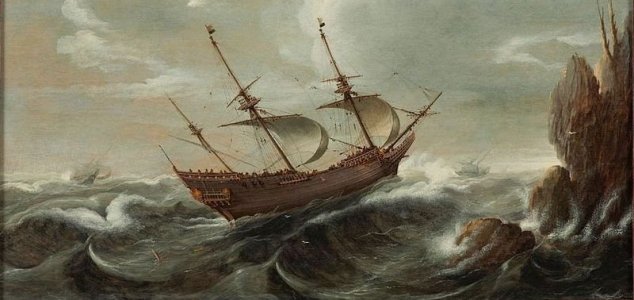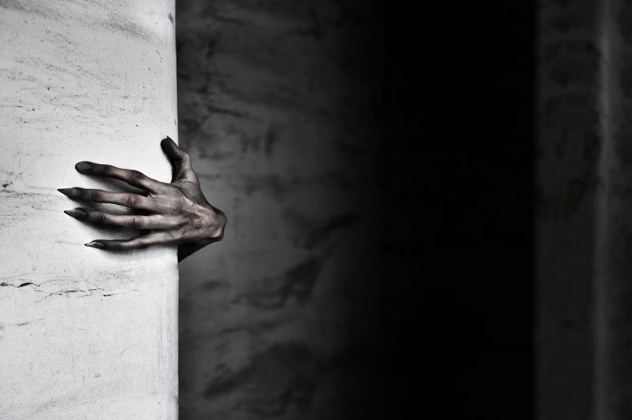
THE MAN IN THE IRON MASK
The mystery of the Man in The Iron Mask has been a focal point for both doe eyed romantics and serious historians since the 17th century, generating countless theories about the identity of the masked prisoner. The interest continues even to this day, as evidenced by Di Caprio’s movie. But the world is still no closer to discovering who this tragic figure was, and as the years pass, the chances of discovering of his (or her) true identity continues to fade.
Little is known about the prisoner. What little that exists in French official documents paints a deliberately sketchy picture: he was arrested in 1669, and was imprisoned first in Pignerol, a fortress high in the French Alps. He was transferred in 1681 to Exiles, which lay close to Pignerol, and in 1687 he was moved yet again to the southern French coastal island of Saint Marguerite. His stay on the island lasted eleven years until he was sent to the Bastille in Paris. Finally, the prisoner died in 1703, an undoubtedly welcome release.
Throughout his entire imprisonment, there were reportedly only two instances of witnesses outside of prison officials actually seeing the prisoner. During his move from Exiles to Saint Marguerite, the prisoner was seen wearing a steel mask. With the move to the Bastille, this cumbersome disguise was replaced with a more humane mask of black velvet. It has also been discovered through official correspondence between a government minister and Saint Mars, the prisoner’s jailer, that the prisoner was not to communicate with anyone, be it by writing or speaking. If he did, he was to be executed on the spot.
What terrible secret could this man have possessed that demanded such secrecy? Historians have wondered why he was even kept alive: if the knowledge he held was of such danger to the King and government, wouldn’t it have been politically safer simply to kill him? And why such a concern over people seeing his face? Did he resemble someone well known to the French populace, which would have to make him famous indeed, considering the primitive state of print media during the 17th century? Once again, simply killing him — an option not in disuse in the French court of the time — would have made more sense.
The mystery of the Man in The Iron Mask is as unknowable now as it was three hundred years ago. What is known is that a man paid a horrible price for an alleged crime — or deadly secret — that history can only guess at.
THE STRANGE PART
Saint Mars, the man appointed to jail the mysterious prisoner, held that position from the first day of his incarceration until the prisoner breathed his last in 1703. Given the usual turnstile approach to political appointments, this constancy is intriguing.
THE USUAL SUSPECTS
Louis XIV
Many fingers point towards the King of France. The masked prisoner could have been the twin brother of Louis, rumoured to have been conceived first but unfortunately born last. His true identity hidden from the twin to clear up any messy succession procedures, Louis would have imprisoned him once he discovered who he was. Other theories feel that he could have been an elder brother, the result of an extramarital affair of Louis’ mother. Another theory states the prisoner was an attending doctor at Louis XIII’s autopsy, who unfortunately discovered the late king incapable of siring children, thus endangering Louis XIV’s own right to the throne. Following the same thread, the prisoner could have been the true father of Louis, recruited due to the previous king’s inability in the bedroom, hidden to stave off political turmoil.
Count Antonio Matthioli
He may have been the prisoner, wearing the mask for the most pointless of reasons: because it was the fashionable thing to do in Italy at the time.
Louis Oldendorff
A Lorraine nobleman, Oldendorff was the leader of the Secret Order of the Temple. The rules of this society would not allow them to replace him while he still lived. After he died, another man was made to wear the mask, thus maintaining the illusion of Oldendorff’s imprisonment, and keeping the Order from selecting a new leader.
Also suspected to be the prisoner: Richard Cromwell; the Duke of Monmouth; Vivien de Bulonde
THE UNUSUAL SUSPECTS
Hidden Daughter of Louis XIII and Anne
Terrified of not having a son, the elder Louis may have hidden his newborn daughter and replaced her with an infant boy changeling. When she discovered her identity, Louis XIV (the changeling) had her imprisoned.
Moliere
As beloved as the playwright was both by the French public and Louis XIV, Moliere made many enemies because of his lack of religious beliefs and disdain for the French establishment. He especially angered the Company of the Holy Sacrament, a strong and influential Catholic group. The theory follows that Moliere’s death was staged in 1673, with the playwright becoming The Man In The Iron Mask as punishment.
Nicholas Fouquet
Fouquet was allegedly imprisoned for discovering hidden knowledge that Christ didn’t die on the cross, but survived, leading to a secret bloodline of direct ancestors.
MOST CONVINCING EVIDENCE
The fact that the prisoner wasn’t simply killed indicates that there must have been a royal connection. Anyone else would have been left to an unmarked grave or garotte.
MOST MYSTERIOUS FACT
Despite the backstabbing of French politics, despite the gains that could be made by revealing who this prisoner was, despite methodical examination of records, there is no indication of who the prisoner was. It was an universally kept secret, by all parties involved.
SCEPTICALLY SPEAKING
The identity of the Man In the Iron Mask is so well hidden one can surmise it’s simply because he didn’t exist at all. The vision of such a figure would go far in quelling any dissidents to the King’s rule. The prospect of lifelong imprisonment will do that.
Originally posted 2016-04-08 20:28:06. Republished by Blog Post Promoter













